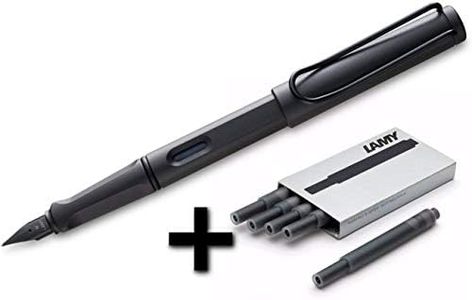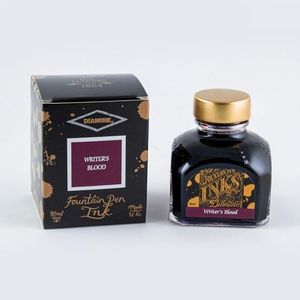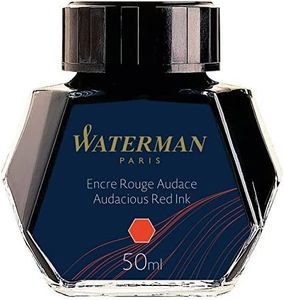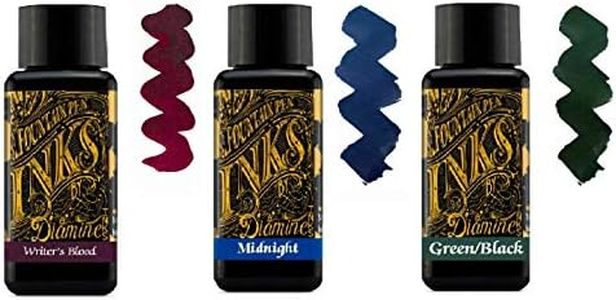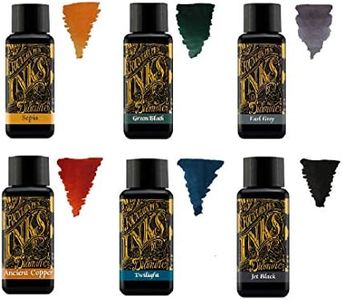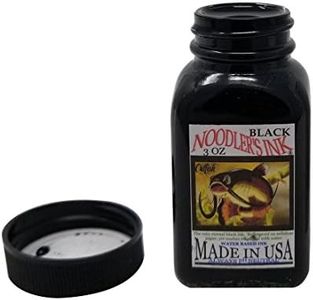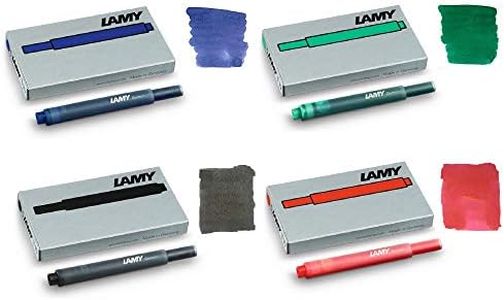We Use CookiesWe use cookies to enhance the security, performance,
functionality and for analytical and promotional activities. By continuing to browse this site you
are agreeing to our privacy policy
10 Best Fountain Pen Inks
From leading brands and best sellers available on the web.Buying Guide for the Best Fountain Pen Inks
Choosing the right fountain pen ink can greatly influence your writing experience, both in terms of how your writing looks and how your pen feels while using it. With a wide variety of inks available, it's important to think about your personal needs, such as the type of paper you write on, your preferred pen, aesthetic preferences, and any specific practical requirements, like quick drying. Take some time to consider what you value most: vibrant color, smoothness, safety, or permanence, and let those priorities guide your selection.Color and SaturationColor is the most noticeable aspect of fountain pen ink and can range from standard blue or black to vibrant shades like turquoise, purple, or even shimmering gold. Saturation refers to how rich and deep the color appears on paper. Highly saturated inks deliver bold, vivid lines, while less saturated inks tend to look softer and more subtle. Consider the impression you want your writing to make: formal settings often call for classic, conservative colors, while expressive notes or creative work may benefit from unique or bright shades.
Drying TimeDrying time is how quickly ink becomes smudge-proof on paper. Fast-drying inks are great if you tend to write quickly, are left-handed, or are using less absorbent paper, reducing the chance of smears. Standard inks take a bit longer to dry but often look richer. Those concerned about smudges or who use their notebook on the go should prioritize quick-drying options, while slow-drying inks might suit stationary writers who want bolder results.
Flow and LubricationInk flow describes how easily ink moves from the pen's nib onto the paper, and lubrication refers to how smoothly the nib glides as a result. Wet-flowing inks feel smooth and create broader, darker lines, while dry inks deliver finer, lighter writing and help prevent feathering on cheap paper. Choose a wetter ink if you want a buttery-smooth writing feel and use thicker paper, and a drier ink if you need crisper lines or often use thinner, standard paper.
Water ResistanceWater resistance tells you whether your writing will survive accidental spills or moisture. Permanent and waterproof inks resist water and fading, making them suitable for important documents or journaling, while non-waterproof inks wash away easily. If you need archival or long-lasting notes, look for water-resistant options. For regular everyday writing where permanence is less important, standard inks will suffice and are typically easier to clean from your pen.
Ease of CleaningSome inks are easier to clean from pens than others. Inks with special properties (like shimmer or waterproof formulas) can require more thorough cleaning and maintenance. If you prefer low-maintenance pens or switch ink colors often, look for inks labeled as 'easy-clean' or 'standard.' Those experienced with fountain pens or seeking specific effects might be comfortable using more demanding inks.
Special Effects (Sheen, Shading, Shimmer)Certain inks offer visual effects beyond basic color. Sheen gives a metallic shine when viewed at an angle; shading shows more depth by making some strokes darker; and shimmer adds glitter to your writing. These effects can add flair to letters or art but may perform differently depending on your pen and paper. If you enjoy creative or eye-catching writing, explore these special inks, but if you prioritize legibility or practicality, a standard, even-flowing ink might be best.
Ink Type (Dye-Based vs. Pigment-Based vs. Iron Gall)The base of the ink affects its performance and safety in pens. Most inks are dye-based, offering smooth flow and easy cleaning, while pigment-based and iron gall inks are known for permanence and resistance to fading. Pigment and iron gall inks require more cleaning and care but are perfect for official documents. If you are new to fountain pens or want hassle-free usage, stick to dye-based inks; if you require archival quality, consider the others with proper maintenance.
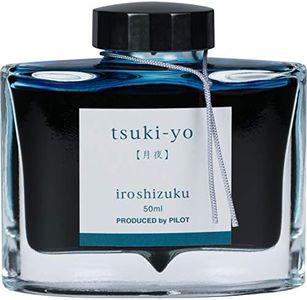

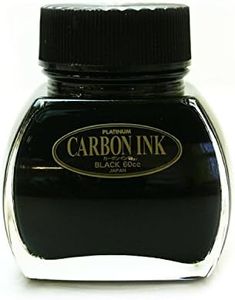
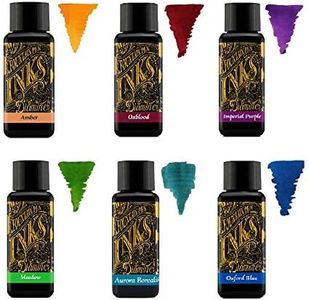
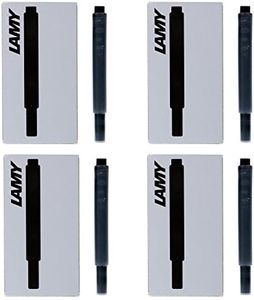
![Wordsworth and Black Fountain Pen Ink Bottle (50 ml) Premium Luxury Edition, [Mysterious Black] Fountain Pens Bottled Ink; Classic Designed Bottle Smooth Flow 50 ml](https://images-proxy.bestreviews.guide/TtPhr6JZwi425MA17d5k915mBUY=/0x300/https://m.media-amazon.com/images/I/4108jYOObkL._AC_CX679_.jpg)
